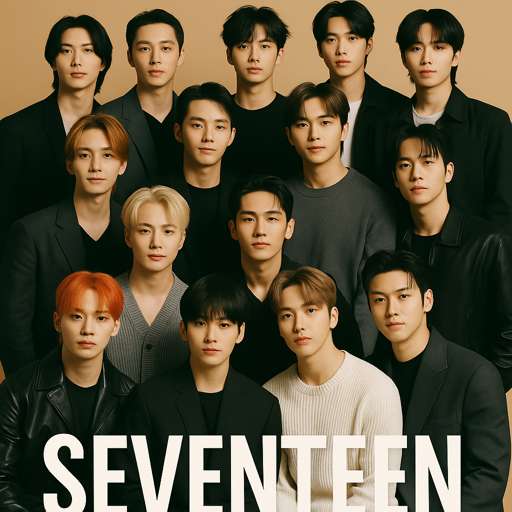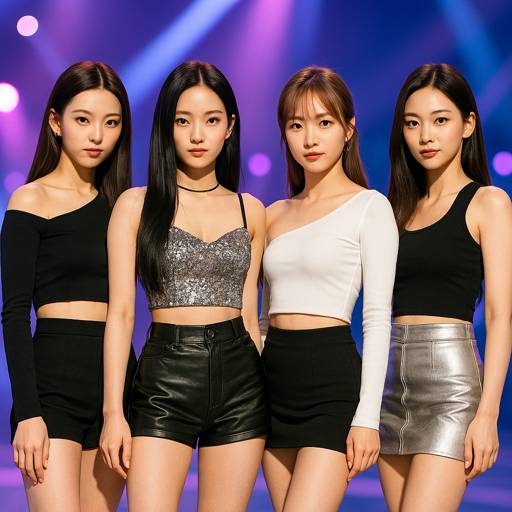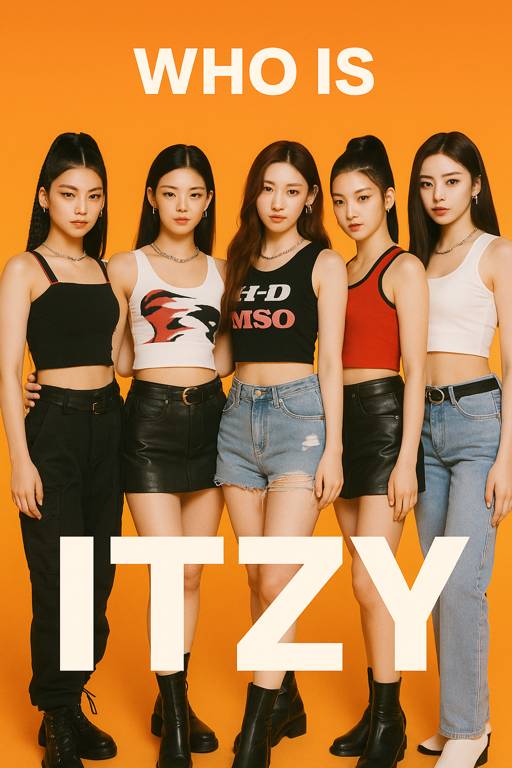Introduction: More Than Just a Boy Band
In the fast-paced world of K-pop, few groups have managed to achieve both massive popularity and critical respect. One such group is SEVENTEEN (세븐틴)—a 13-member boy group under PLEDIS Entertainment, now a part of HYBE Labels. Since their debut in 2015, SEVENTEEN has earned the title of “self-producing idols.” They are heavily involved in songwriting, choreography, and performance planning.
But SEVENTEEN’s story is more than music charts and award shows—it’s about teamwork, artistic integrity, and consistency. Their growth has been steady, organic, and deeply rooted in mutual respect between members and fans.
Group Structure: 13 Members, 3 Units, 1 Team
Despite the name, SEVENTEEN has 13 members, divided into three sub-units, each specializing in a different area:
- Hip-Hop Unit: S.Coups, Wonwoo, Mingyu, Vernon
- Vocal Unit: Woozi, Jeonghan, Joshua, DK, Seungkwan
- Performance Unit: Hoshi, Jun, The8, Dino
The group’s naming concept (13 members + 3 units + 1 team = 17) highlights their focus on unity. They embrace diversity within the team.
Self-Producing Identity
One of SEVENTEEN’s most defining features is their hands-on creative involvement:
- Woozi, the vocal unit leader, is the primary composer and producer of many title tracks.
- Hoshi, leader of the performance unit, choreographs much of the group’s intricate dance routines.
- Members regularly co-write lyrics, direct stage performances, and collaborate with external producers.
Their artistry is not manufactured; it’s cultivated through hard work, passion, and collaboration.
Musical Evolution
SEVENTEEN’s discography is rich and varied, blending genres like pop, hip-hop, R&B, EDM, and funk. Some key releases include:
- “Adore U (아낀다)” (2015): Their charming debut track
- “Don’t Wanna Cry (울고 싶지 않아)” (2017): An emotional EDM-driven hit that marked their maturity
- “Left & Right” (2020): A playful anthem with youthful energy
- “Ready to Love” (2021): A pop ballad showcasing vocal depth
- “Super (손오공)” (2023): A bold, powerful track inspired by the mythical figure Sun Wukong
Each comeback reflects growth, both musically and emotionally. SEVENTEEN isn’t afraid to experiment while staying true to their identity.
Performance Excellence
SEVENTEEN is widely regarded as one of the best-performing K-pop groups:
- Their synchronized choreography, often executed with all 13 members, is a visual spectacle.
- Their live vocals are consistently strong, even during demanding routines.
- They often design unique stages that enhance storytelling through motion and lighting.
Their concerts, known as “SEVENTEEN Tour: Be The Sun” and others, sell out globally. They are celebrated for their energy, precision, and emotional resonance.
Fanbase: CARATs
SEVENTEEN’s official fandom is called CARAT, symbolizing how fans make the group shine like diamonds.
CARATs are known for their deep emotional connection with the group. They often cite SEVENTEEN’s authenticity as a reason for loyalty. Humor and teamwork also play a role. SEVENTEEN members frequently express gratitude, even memorizing fan names, writing letters, and participating in fan events.
This tight-knit bond fuels a healthy, supportive community, both online and offline.
Achievements and Milestones
SEVENTEEN has accumulated numerous accolades:
- Billboard 200 chart entries
- Million-selling albums like Face the Sun, FML, and Seventeenth Heaven
- Multiple Daesangs (grand prizes) at Korean award shows
- Recognition from TIME, Rolling Stone, and Forbes
- A growing presence on U.S. and Japanese charts, including Oricon and Billboard Japan
Despite fierce competition, they’ve carved out a unique position as trendsetters who lead with authenticity.
Beyond the Stage: Variety and Personality
SEVENTEEN isn’t just a musical group—they’re entertainers:
- Their self-produced show “Going Seventeen” is beloved for its humor, creativity, and chaotic energy.
- Members are often featured on Korean variety shows like Knowing Bros, Running Man, and The Manager.
- They are ambassadors for global brands including Apple, Samsung, and Louis Vuitton (The8 and Vernon in particular).
These appearances show another side of SEVENTEEN: relatable, goofy, and incredibly charming.
Global Impact
SEVENTEEN’s influence extends far beyond Korea:
- They’ve headlined world tours across North America, Europe, and Asia.
- Their music is streamed in over 180 countries.
- They’ve collaborated with international artists and producers.
- English-language content has increased, making them more accessible to global fans.
Their story proves that success doesn’t require instant virality—it can be built through consistency, creativity, and community.
Final Thoughts: Why SEVENTEEN Matters
SEVENTEEN represents a new era of K-pop—one where idols are creators, not just performers. Their journey from underdogs to global stars is inspiring for fans. It’s also inspiring for anyone who believes in teamwork. It inspires those who believe in persistence and authenticity as well.
They are not just “good at everything.” They’re passionate about everything they do, and that’s what makes them exceptional.
If you’re new to K-pop, SEVENTEEN is the group to watch. They have heart, talent, and humility. SEVENTEEN is the one to watch. They are also the one to believe in.





